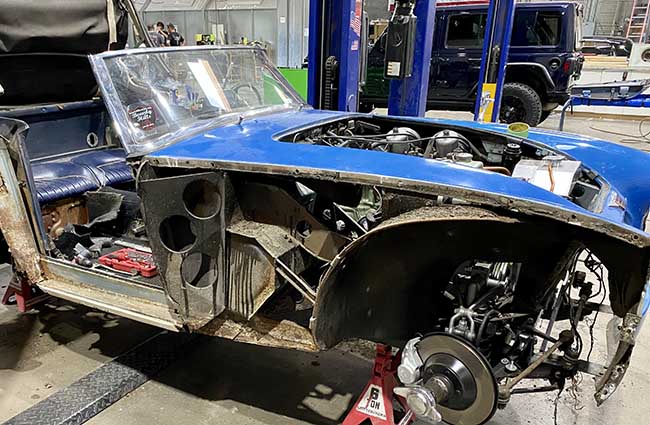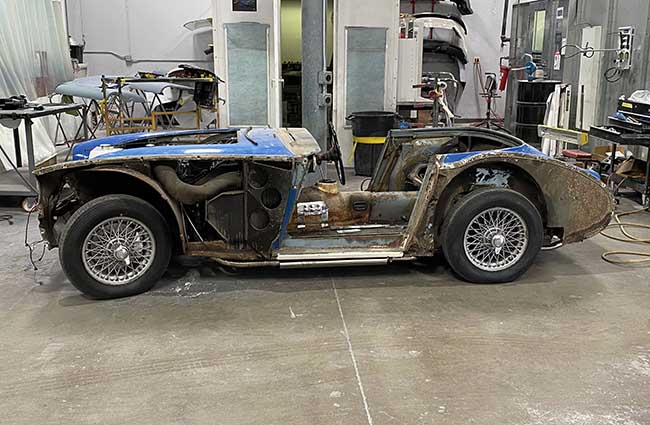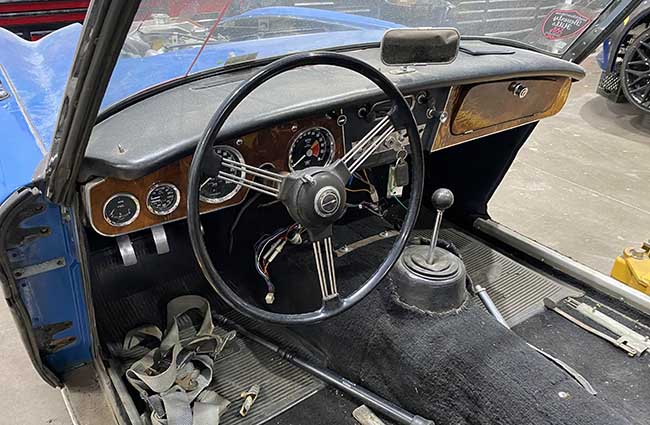Classic Car Restoration
TEMPE, AZ | PHOENIX, AZ
Classic Car Restoration
by Apex Customs



Restoring a classic car can be a highly rewarding - yet challenging project. It takes patience, dedication, and hard work. Whether it's a vintage muscle car, a classic European sports car, or an antique truck, restoring an old vehicle to its former glory is a labor of love, and it's not for the faint of heart. At Apex Customs, we go “all-in” as your partner for your restoration project. Having a shop like Apex Customs involved in your project can be the difference between success and failure. We can take on the most difficult aspects of your project, or we can do all the heavy-lifting for you, and deliver a fully restored beauty, ready for your favorite car shows.
Step by Step
There are many steps involved in choosing and restoring a classic car. It truly is a labor of love. Here are some of the important steps in the process:
- Finding the Perfect Candidate: Finding the perfect candidate is the first step in restoring a classic car. This can involve scouring classified ads, online listings, and even junkyards searching for a vehicle with a solid frame, minimal rust, and all necessary parts. Finding the perfect candidate can take months or even years, but once you do, the real work begins.
- Stripping the Car Down: Once you've found the perfect candidate, the next step is to strip the car down to its bare frame, removing all the interior, exterior, and mechanical components. This is a critical step in the restoration process, as it allows you to inspect every inch of the vehicle and assess the damage and wear and tear that needs to be addressed.
- Structural Damage Repair: Addressing structural damage to the frame is another critical step in restoration. This can involve welding, sanding, and other metalworking techniques to repair and reinforce the frame. Structural damage can be caused by rust, bent metal, or other factors, and it's essential to address these issues before moving on to other aspects of the restoration.
- Bodywork: Repairing or replacing any damaged or missing body panels, bumpers, and trim pieces is another critical step in restoration. This can involve sourcing new parts, repairing damaged parts, and ensuring everything fits together seamlessly.
- Mechanical Overhaul: Overhauling the engine, transmission, and other mechanical components is one of the most complex and time-consuming aspects of restoring a classic car. This can involve rebuilding the engine, replacing worn bearings, gaskets, and seals, tuning the carburetor, distributor, and other components, and overhauling or replacing suspension and brake systems, electrical systems, and other mechanical parts.
- Interior Restoration: Restoring the interior of a classic car can be a laborious and time-consuming process that involves replacing or repairing the seats, headliner, carpet, door panels, and other components. Upholstery work is often done by hand, using traditional techniques and materials, including horsehair padding, leather or vinyl upholstery, and hand-stitching techniques.
- Painting the Car: Painting the vehicle is one of the final steps in the restoration process, but it's also one of the most important. Priming, sanding, and painting the car to create a smooth, glossy finish is critical to the entire restoration process, as it gives the vehicle its polished look.
Preserving Automotive History
Classic car restoration is not just about fixing up an old car but about preserving a piece of cultural heritage. Restoring a classic car ensures that these vehicles will continue to be enjoyed for generations to come and that you are preserving the rich history of the automotive industry for future generations.
Challenges of Classic Car Restoration
Restoring a classic car is not without its challenges. Parts can be difficult to find, expensive, or obsolete, requiring us to fabricate custom parts from scratch. Rust and corrosion can also be major challenges, requiring specialized equipment and techniques to remove and repair. Additionally, some classic cars may have been manufactured in limited quantities, making it difficult to find replacement parts or accurate information about the vehicle's original specifications and design.
Costs of Classic Car Restoration
Restoring a classic car can be costly when considering the vehicle's initial purchase and the restoration costs. However, vintage vehicles that have been fully restored can command high prices at auctions and collector car shows, with some cars selling for millions of dollars. As a result, classic car restoration can also be a lucrative venture for those who can restore cars to high quality and accuracy. And that’s why it is so important to have a shop like Apex Customers there to help you with a plan, a budget, and the skills and capabilities needed for a successful restoration.
